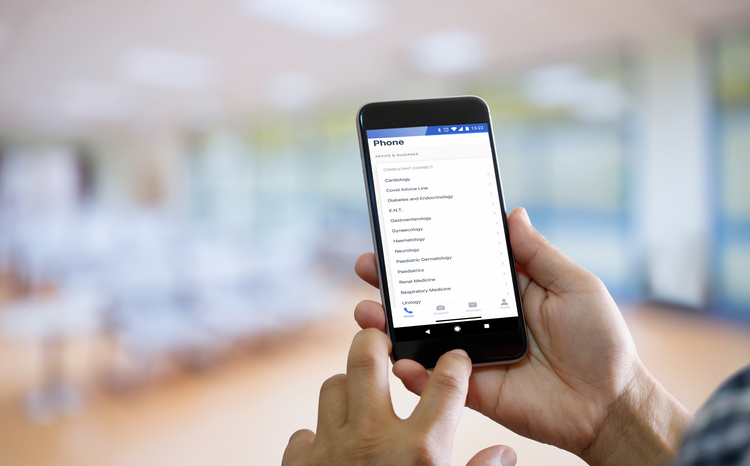Dallas: telehealth’s reboot reviewed

When the Whole System Demonstrator project failed to deliver the business case for telehealth, the government decided to try again with the Delivering Assisted Living Lifestyles at Scale programme.
This massive, well-funded, three-year programme finished last year, and has been slowly publishing its findings. An online resource carries evaluations by the University of Glasgow and research on the potential for business from Databuild Research and Solutions.
The main evaluations focus on the two city-wide projects that were run, on the difficulty of getting these working in a multi-agency environment, on information governance and interoperability challenges, and on academic debates about how to gauge the value of this kind of intervention.
What they lack is hard numbers on patients diverted and money saved. The researchers put forward good, theoretical, reasons for this. But it perhaps explains why Dallas has largely vanished from the policy debate, even as the imperative to move care out of hospitals and onto digital platforms has grown with the NHS’ financial woes.
The Dallas project
Dallas had the mission of benefiting 169,000 people across the UK by 2015 by giving them access to innovative health and care technologies.
The £37.3 million project saw four different areas of the country try to “think beyond traditional health and social care”, says Hazel Harper, a programme manager at Innovate UK. “The idea was to chuck away the rule book and support communities and older people, transforming their choices as they age.”
Dallas emerged from the fall-out from the WSD project. The WSD, set up in 2006, was one of the world’s first and largest randomised controlled trials for telehealth and telecare, covering more than 6,000 patients across three different sites.
However, while the WSD was explicitly set up to build the evidence base for telehealth, and to work out the organisational changes that would be needed to implement it effectively, a 2013 British Medical Journal report found it was not cost effective.
More specifically, a whole series of research papers found the WSD trials did not reduce contact with GPs or nurses and did not lead to significant reductions in the use of other services (indeed, it increased admissions in the short term). Also, that telehealth was “not a cost effective addition to standard support and treatment” and didn’t improve the quality of life for users.
“It did exactly what it said on the tin. It looked at the technologies and produced its report”, comments Harper, “and from that people were expecting that we’d finally get on with this.” When this didn’t happen, Dallas took a different approach. There was no randomised control trial and the project was user focused.
The six Cs in Dallas
Funded by Innovate UK (formerly the Technology Strategy Board), the Scottish government, National Institute for Health Research and others, four consortia were tasked with running a huge scale innovation programme.
Living it Up wanted to empower over 50s in Scotland to use technology to manage their health; Liverpool’s More Independent (Mi) set out to help citizens to take control of their health; Year Zero looked to provide the tools for people to look after their health; and i-Focus targeted interoperability across the other three programmes.
Each of these “communities” had to keep six Cs at the core of their work – choice, control, connecting with community, contribution and collaboration. The quartet each had from June 2012 to May 2015 to use the money to test and scale up new ideas and technologies.
Dallas allows Liverpool to make mistakes
In Liverpool, 30% of people live with one or more long term conditions and over half of adults are obese or overweight. With these statistics, the city was an ideal base to test out technologies to help people stay in their own homes and out of the health and care system, and to support people in maintaining their own level of fitness.
“The fundamental issue we were trying to grapple with, under the Dallas project, was people’s ownership of their own health,” says Dave Horsfield, digital care and innovation programme lead at the Liverpool clinical commission group.
Mi, which remains active, gave the CCG an ability to break down the different silos within health and social care, and also allowed Liverpool to test things out and “allowed us to get some stuff wrong”, he adds.
An example of this was pushing telehealth out to people who were seriously ill; community matrons found this hindered their essential clinical work.
The Liverpool project discovered that the best results for the technology came from targeting those at around the 60% mark of risk of hospital admission, which was far lower than Horsfield was aiming for initially.
Despite this, the study found, as many other telehealth studies have done, that patients tended to feel more in control of their condition and to report improvements in their health and lifestyle. On the back of this, the CCG’s ‘Healthy Liverpool, The Blueprint’, published in November 2015, gave technology a critical role.
A new method of evaluation for digital projects
Dallas’ principal investigator was Frances Mair, also a professor of primary care research at the University of Glasgow. Despite the natural tendency of policy makers to lobby for one, she found that a conventional health economic evaluation did not fit the project.
Mair gives as an example a portal that acts as a market place for volunteers to offer their skills, a standard evaluation of whether this decreases hospitalisations or the likelihood of death is inappropriate, she argues. That’s not what it is for.
Instead, new impacts were discovered and assessed as part of the Dallas approach. A paper detailing a ‘flexible toolkit’ for evaluations will be published next year. It looks at a range of issues, such as how to decide how many people a project has reached, how health professionals evaluate its progress, what outcome measures are available, and how to capture less tangible items, such as quality of life or wellness.
On the latter, the researchers set up an online survey to enable the public to put a value on the 6Cs, by reporting their willingness to pay or accept a specified good or service (the survey results do not appear to have been made public).
Harper says this “might sound added value, but actually in this world where we’re moving towards much more digitalisation, looking at how we evaluate is really important”.
Infrastructure and interoperability
Other aspects of the evaluation ran into other problems. The booklet notes that the programmes evolved all the time, against a “backdrop of economic austerity” and the reorganisation of the NHS. Some of the initial commercial partners “went out of business and into receivership”.
Nevertheless, researchers concluded that “readiness of the healthcare system and the infrastructure in the UK for rolling out digital health services at scale” really matters.
On the system front, they note that it is difficult for teams to deliver and innovate at the same time; some headroom needs to be built into workflows.
On the technology front, they note that if you are going to rely on a health app or a personal health record, and it is inaccessible during a consultation because of a lack of wi-fi, the technology is rendered useless.
Another key finding was the importance of interoperability. “In the real world, what’s the big thing that’s going to be a priority for a company?” asks Mair. “Is it promoting interoperability or increasing their market share?”
The Dallas evaluation argues it is important to incentivise interoperability in some way. “It’s clear the technical issues are not insurmountable, but it’s about getting businesses to engage.”
Harper says Dallas, itself, had an impact on issues such as interoperability through its cross-silo work. “It has raised a massive awareness about how we can do things digitally and differently, especially in the statuary sector.”
Getting the message across
Another aspect of the Dallas project was engaging those who were not actively engaged in healthcare technology. Harper argues: “Awareness of health and wellbeing with Joe public is not at a level it should be.”
In Liverpool, this translated into a “cultural shift – it’s your own health, it’s your own responsibility to stay well,” says Horsfield.
In Scotland, in Living it Up, this goal manifested itself in one of the largest co-design intervention projects, to understand more about what the communities in the Highlands wanted out healthcare technologies. Yet despite this extensive research, the project only managed to recruit a quarter of the expected users.
At the end of the day, what Dallas may have discovered, and what the WSD may have proved before, is that telehealth has a place, but there is only so much it can do.
As Horsfield remarks: “Technology has its place, but it doesn’t replace the real quality care you get face to face when you need it from a clinical professional.”




